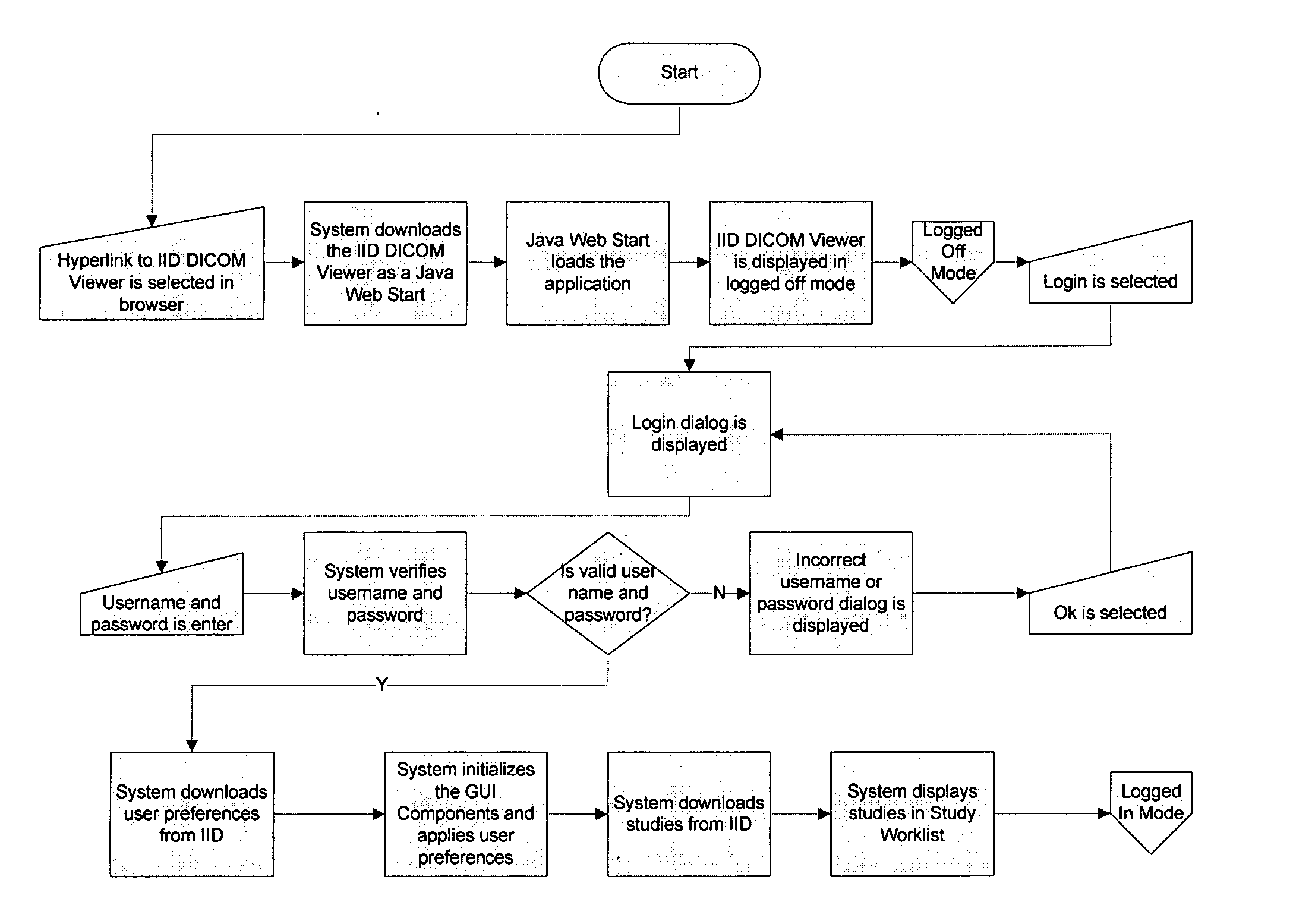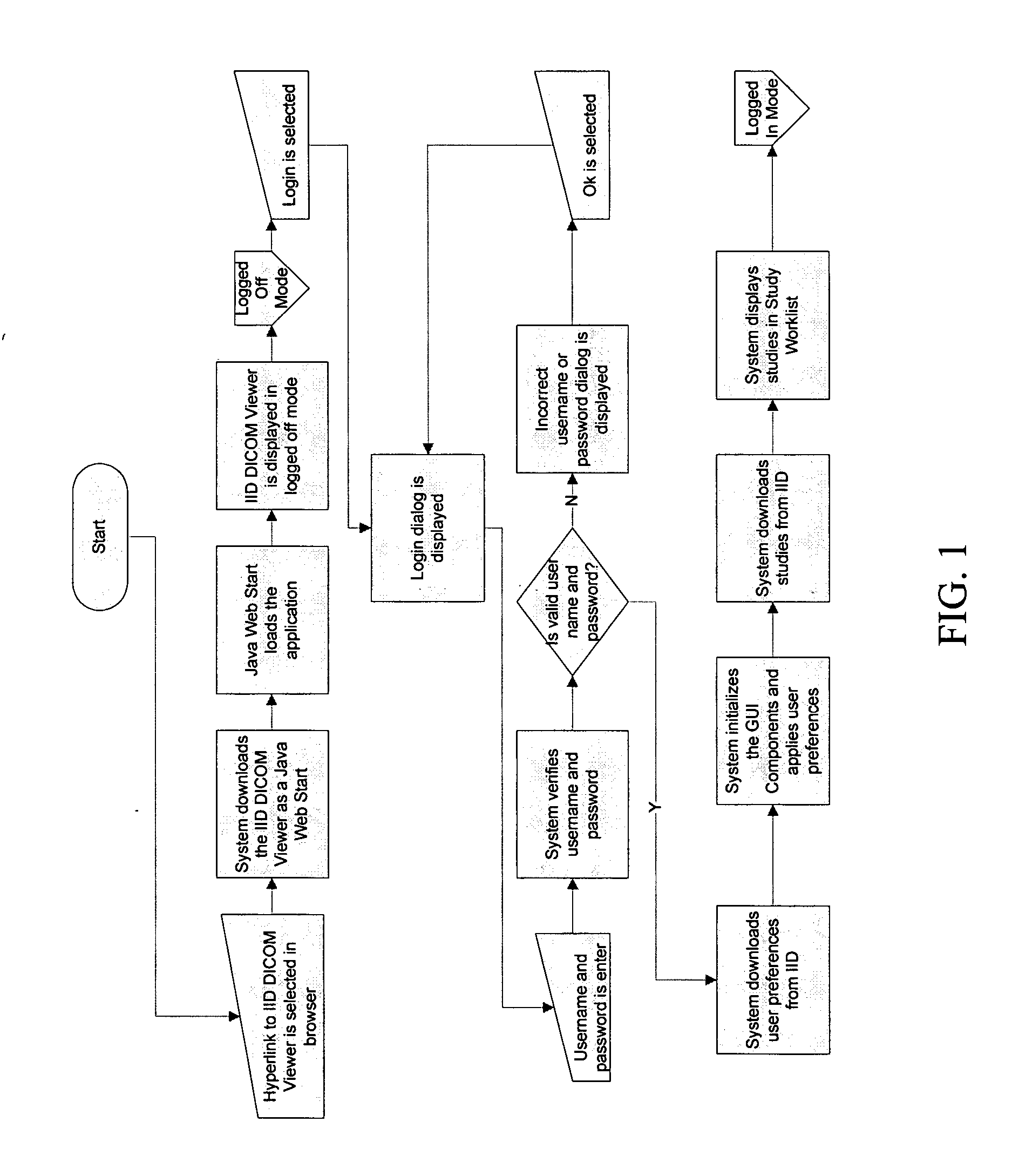Methods and systems for providing data across a network
a technology of data and network, applied in the field of methods and systems for providing data across a network, can solve the problems of increasing the volume of data with existing workflow solutions, high latency networks that can take a considerable amount of time to move data, and increasing data transfer latency,
- Summary
- Abstract
- Description
- Claims
- Application Information
AI Technical Summary
Benefits of technology
Problems solved by technology
Method used
Image
Examples
example 1
Get Destination List
This example describes the flow of events that are required for an IID Viewer to get a current list of Destinations.
Pre-Conditions: IID Viewer is connected to an IID Server
Post-Conditions: IID Viewer has an updated destination list
Basic Flow
[0134] 1. IID Viewer issues a command to the IID Server to get the Destination list [0135] 2. The IID Server receives the command and requests the current Destinations from the IID Server database. [0136] 3. The IID Server database returns the list of Destinations to the IID Server. [0137] 4. The IID Server processes the list, and sends the list to the IID Viewer.
example 2
Get Study List
[0138] This example describes the process followed when an IID Server populates the study list that resides in an IID Viewer.
Pre-Conditions: IID Viewer has an update connection to the IID Server; IID Server has a connection to the IID Server database; IID Server database contains a study list; IID Server knows the last time it sent an update.
Post-Conditions: IID Viewer has a current Study List.
Basic Flow [0139] 1. The IID Server queries the IID Server database for all studies that belong in the study list. [0140] 2. The IID Server database returns a list the current studies to the IID Server. [0141] 3. The IID Server properly formats the study list, and sends the list to the IID Viewer via the update connection. [0142] 4. The IID Server returns the sends the study list to the IID Viewer.
Alternative Flows [0143] 1. The IID Server determines the study list needs to be updated. [0144] 2. The IID Server queries the IID Server database for all studies that have bee...
example 3
Load Balance Incoming Transfer
[0147] This example describes how incoming transfers are load balanced between individual IID Receive Servers.
Pre-Conditions: The Load Balancing Machine has a list of IID Receive Servers to balance connections among. The IID Receive Servers are all setup to receive connections, on the same address and port.
Post-Conditions: The Load Balancing Machine can update its list of IID Receive Servers.
Basic Flow [0148] 1. DICOM Peer attempts to form a connection with the IID Receive server. [0149] 2. The Load Balancing Machine accepts the connection from the DICOM Peer on behalf of the IID Receive Server [0150] 3. The Load Balancing Machine chooses the next available IID Receive Server. [0151] 4. The Load Balancing Machine forms a connection to the IID Receive Server of choice. [0152] 5. The Load Balancing Machine transparently forwards all data between the two connections.
Alternative Flows
IID Receive Server does not respond [0153] This alternative flo...
PUM
 Login to View More
Login to View More Abstract
Description
Claims
Application Information
 Login to View More
Login to View More - R&D
- Intellectual Property
- Life Sciences
- Materials
- Tech Scout
- Unparalleled Data Quality
- Higher Quality Content
- 60% Fewer Hallucinations
Browse by: Latest US Patents, China's latest patents, Technical Efficacy Thesaurus, Application Domain, Technology Topic, Popular Technical Reports.
© 2025 PatSnap. All rights reserved.Legal|Privacy policy|Modern Slavery Act Transparency Statement|Sitemap|About US| Contact US: help@patsnap.com



